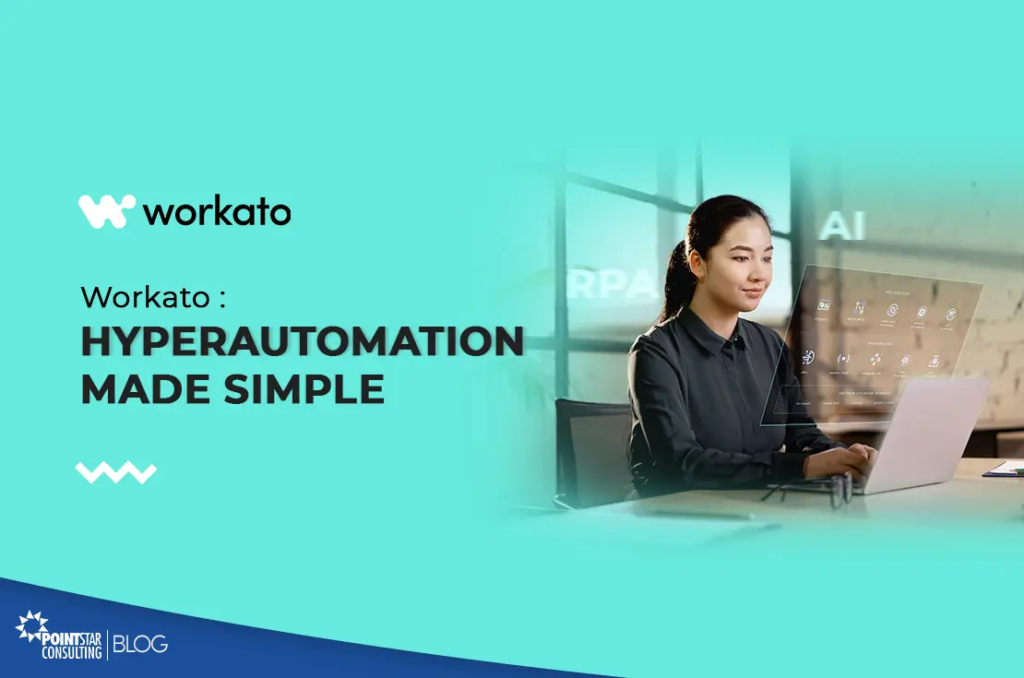Automation, hyperautomation, artificial intelligence, machine learning, deep learning, the list is endless. In the digital age, the sheer volume of tech jargon can leave you in a spin. Beneath the veneer of tech word salad lies humbler meanings. In this article, we will address one: hyperautomation.
Many technology solutions providers have widely used the term hyperautomation. Its function can range anywhere from a significant step in process automation to a magic bullet that can support customers and automate operations. However, the term must be explained more clearly for others to understand. Let’s unpack hyperautomation!
Definition of Hyperautomation
Hyperautomation is a strategic, methodical approach organisations employ to swiftly identify, evaluate, and automate as many business and IT processes as feasible. It entails the coordinated use of various technologies, tools, and platforms, such as artificial intelligence (AI), machine learning, event-driven software architecture, robotic process automation (RPA), and business process management (BPM). It also includes intelligent business process management suites (iBPMS), integration platform as a service (iPaaS), low-code/no-code tools, packaged software, and other decision, process, and task automation tools
The Benefit of Hyperautomation
As mentioned above, hyperautomation offers numerous benefits to businesses by enhancing operational efficiency and reducing costs. By automating mundane tasks such as data entry hyperautomation allows employees to focus on higher-value activities that require human judgement, creativity and analytics, tasks that lead to better resource utilisation and increased job satisfaction.
Hyperautomation also ensures accuracy and consistency, minimising the risk of human error and maintaining uniform quality in outputs. The integration of multiple advanced technologies that have emerged in the modern world, such as AI, machine learning, and robotic process automation, enables much faster and more efficient decision-making through real-time data analysis, providing valuable insights and improving responsiveness to market changes.
Additionally, it enhances scalability, allowing businesses to efficiently handle increased workloads without proportional increases in cost or resources. Ultimately, hyperautomation drives innovation and provides a competitive advantage by streamlining processes, improving customer experiences, and ensuring compliance with regulatory requirements.
The Challenges of Hyperautomation
Even though hyperautomation has the potential to transform business operations by increasing efficiency, its implementation can often require the use of multiple tools for different processes, which can lead to various issues.
One of the most prominent obstacles to using hyper-automation is cost. Businesses invest in separate tools for RPA, data pipelines, business process management, AI chatbots, and more, quickly accumulating expenses that could affect their financial situation.
Managing multiple tools within multiple user interfaces on the same application can be a daunting task, leading to confusion and potential failures. The need for extensive, ongoing developer support and customer service further complicates the process. Moreover, the use of various tools with unique coding languages often requires multiple specialised teams, posing a barrier for users with basic technical skills.
With such challenges, businesses tend to be wary of using hyper-automation tools even though they offer clear benefits. This is where an iPaaS platform like Workato comes in handy.
Workato’s Hyperautomation Tool
Workato’s cloud iPaaS platform offers low-code / no-code integration of different solutions and provides simple processes to unleash workflow automation, all in a single platform. This eliminates the need for multiple platforms and applications or hiring teams with the required expertise.
Users can initiate integration of different solutions and specify what, how, and when their tasks can be automated. This can be done with little to no coding, allowing employees to focus on strategic tasks that can help grow their business.
Compared to the traditional hyperautomation process, Workato is a cost-effective solution. It can significantly lower operational costs, accelerate shareholder ROI, and enhance growth, giving you the confidence that your investment is secure.
Conclusion
Workato’s unified, low-code/no-code platform offers a streamlined solution, eliminating the need for multiple tools and specialised teams. Ultimately, hyperautomation, when implemented effectively, drives innovation, provides a competitive edge, and facilitates business growth.



